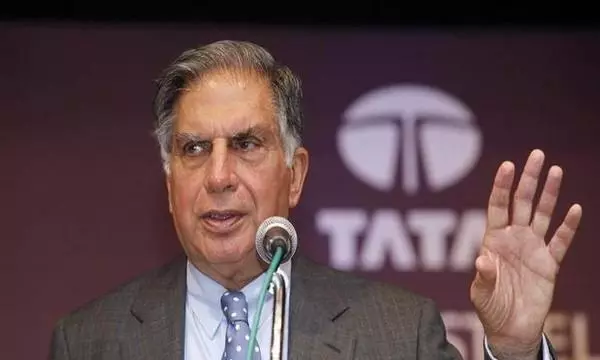
From Nano to Corus Steel, here are a few instances where Ratan Tata struggled
Ratan Tata turned Tata Group into a global powerhouse, increasing its turnover from $4 billion to $100 billion, despite some ambitious ventures underperforming

Tata Group chairman emeritus, late Ratan Tata's overarching vision and leadership ensured a lasting positive legacy, transforming the group into a serious global power.
When he took over the reins of the Tata Group in 1991, its total turnover was around $4 billion. By the time he retired in 2012, its turnover had grown to $100 billion. However, in his long service, some of his most ambitious ventures did not achieve the success he had hoped for.
Here are some of the significant missteps that illustrated the need for prudence, agility, and strategic alignment in such a vast conglomerate.
Acquisition of Corus Steel (2007):
In 2007, Tata Steel fully acquired the Anglo-Dutch steel maker Corus for an astonishing $12 billion, making this one of the biggest overseas buys of an Indian company at the time.
Steel prices took a big hit in 2008, coinciding with the start of the global financial crisis. The group had taken on massive debt to fund the acquisition. After several attempts to sustain the operations, the Tatas finally gave up on its most ambitious venture and sold most of its assets.
Tata Steel sold its European long products division, which was a part of Corus Steel, to Greybull Capital in 2016 for a nominal sum of £1. This sale included the Scunthorpe steelworks and other associated facilities, marking the end of Tata’s ownership of a significant portion of Corus’ assets. The rest of Tata Steel's European operations (primarily focused on strip products) were retained but have also been under financial pressure, resulting in restructuring efforts over the years.
Also Read: Noel Tata appointed chairman of Tata Trusts, succeeds Ratan Tata
Jaguar Land Rover acquisition (2008):
The highly ambitious acquisition of Jaguar Land Rover for $2.3 billion initially seemed like a huge gamble, especially given the fact that Tata Motors was still a fairly small player in the luxury automotive arena.
The early years were very draining, with huge losses and investment in new models and facilities draining Tata Motors's balance sheet. Furthermore, the acquisition of JLR faced challenges such as the global slowdown and uncertainty over Brexit.
Currently, Tata Motors finds itself increasingly reliant on JLR's performance, which makes the company susceptible to fluctuations in the global luxury car market. Furthermore, heightened competition alongside regulatory challenges in China and Europe has also impacted JLR's profitability in recent years.
Nano Car Project (2009):
The Late Ratan Tata always dreamed of making the cheapest car in the world, which gave birth to the Tata Nano project. He envisioned an automobile for the common man, but brand management became a big problem, leading to its failure.
Poor marketing, quality issues, and the stigma of being labelled a “poor man’s car” resulted in dismal sales. Despite significant investments, the project never turned a profit.
The Nano became a financial drain on Tata Motors, eventually forcing the company to phase out the model. It also dented the company’s reputation for innovation.
Also Read: How Cyrus Mistry turned from Ratan Tata's protege to his archrival in corporate battle
Telecom Investment: Tata Teleservices:
The foray into the telecom sector with Tata Teleservices turned into a major debacle. The company struggled to compete against giants like Bharti Airtel and Vodafone, leading to mounting losses.
Tata Teleservices eventually wound up its operations, resulting in billions of dollars in losses for the Tata Group. Its failed partnership with NTT Docomo, which ended in a legal battle, further tarnished the group’s image.
This misstep eroded shareholder value and created uncertainty about Tata Group’s strategic focus in new industries.
Singur Land Acquisition for Tata Nano:
Ratan Tata’s decision to establish the Nano factory in Singur, West Bengal, led to massive protests and political backlash. The land acquisition was seen as heavy-handed, creating a public relations disaster.
The company had to abandon the project in West Bengal and relocate to Sanand, Gujarat, leading to a substantial loss of time, capital, and credibility.
This issue highlighted the complexities of doing business in politically sensitive areas in India and created a lasting negative perception regarding the group's ability to manage socio-political issues.
Also Watch: From Indica to Range Rover: The Tata automobile story
Tata SIA and Air India
The Tata Group was successful in acquiring Air India, the loss-making airline of the Government. Its other joint ventures, one with AirAsia Berhad, Air Asia India and Singapore Airlines, and Vistara airline, have yet to turn around since its launch. The management will now be integrating Vistar and AirAsia India's operations with Air India and its subsidiaries. There has been increasing criticism of how Air India is being run; its service quality has declined to a large extent, putting a question mark on whether the integration will turn out to be successful.
Failure in the integration of succession planning:
The controversy surrounding Cyrus Mistry's appointment and ouster as Chairman of Tata Sons reflected glaring weaknesses in succession planning and governance at the Tata Group.
The resulting legal and media skirmish between Tata Sons and Cyrus Mistry smeared the group's reputation, raising fears of corporate governance, transparency, and strategic direction.
It exposed internal divisions within the group and created uncertainty among investors and stakeholders. The legal battle continued for years, impacting Tata Sons' ability to attract and retain top talent.
While some missteps resulted in piling up debt and a loss of image, Ratan Tata's overall vision and direction established an enduring, positive legacy, turning the group into a global powerhouse. However, such decisions also underscored the need to be cautious, agile, and aligned in such a large conglomerate.

